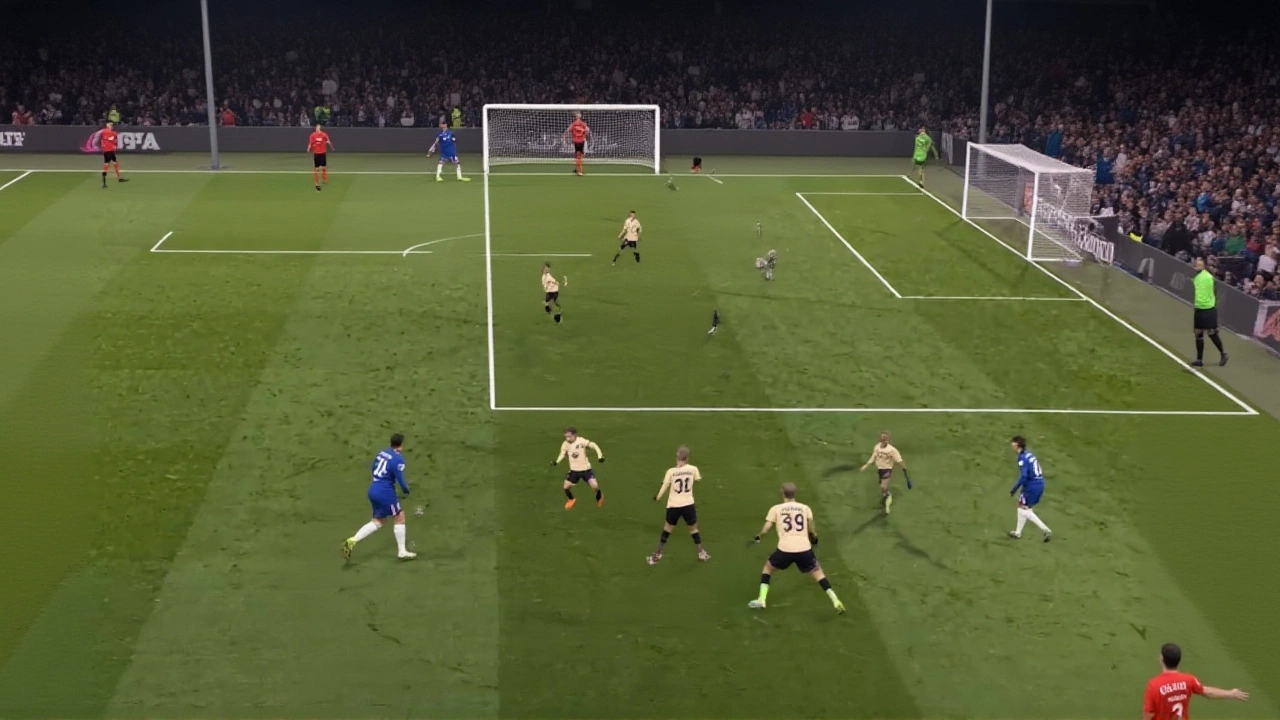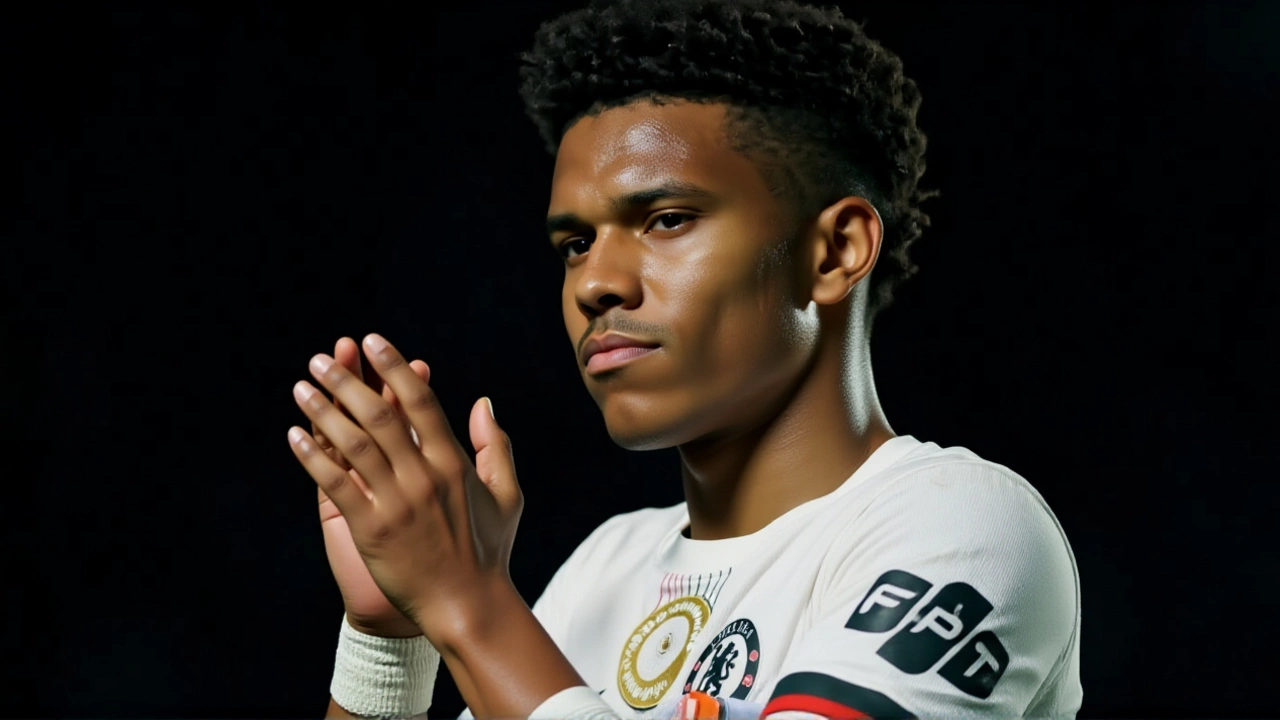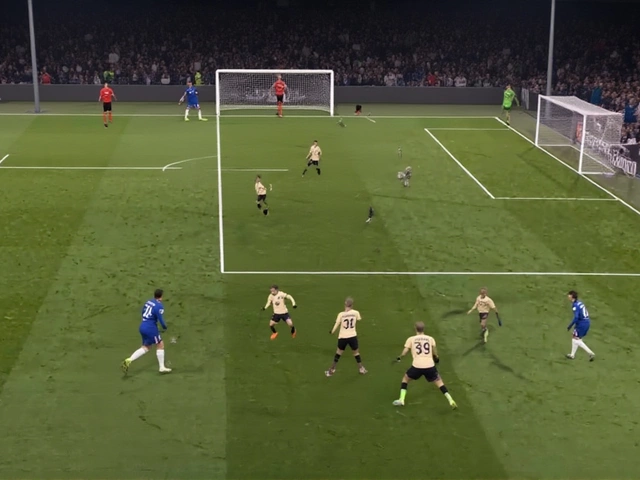Chelsea’s Controversial Goal vs Barcelona Confirmed by Hidden Camera Angles

On Tuesday, November 25, 2025, at 8:00 PM UTC, Chelsea FC crushed FC Barcelona 3-0 at Stamford Bridge Stadium in London — but the real story wasn’t just the scoreline. It was the goal that almost didn’t count. The opening strike, a 27th-minute own goal by Jules Brian Bissouma Kounde, sparked a firestorm of debate. Broadcast replays suggested Marc Cucurella Saseta was offside when he received the ball from Enzo Jeremías Fernández. Fans screamed. Pundits argued. And for a moment, it looked like another VAR blunder. But then, UEFA released the unseen footage — and everything changed.
The Goal That Almost Vanished
The goal came from a meticulously rehearsed corner routine. Cucurella, the Spanish left-back, drifted into the box as if to create a distraction. Instead, he stayed level with the last defender. Fernández, the Argentine playmaker, slipped the ball to him. Kounde, caught in a moment of indecision, misjudged the flight and deflected it past his own keeper. The referee blew for the goal. The Chelsea bench erupted. The Barcelona players froze. Then came the VAR review. And the doubt. Early replays, limited to standard broadcast angles, showed Cucurella slightly ahead of the defensive line. It was enough to make even seasoned observers hesitate. Two earlier Chelsea goals — one disallowed for Wesley Fofana’s handball, another for what appeared to be a misidentified offside involving Liam John Delap (though later corrected) — had already left fans on edge. Was this another mistake? The noise grew louder. Social media exploded. By halftime, #CucurellaOffside had trended across Europe.The Hidden Angle That Settled It
What no one saw during the live broadcast was the camera mounted high above the south stand — a rarely used angle, part of UEFA’s semi-automated offside technology (SAOT) system. Released 14 hours after the final whistle, the footage showed Cucurella’s left foot exactly level with Barcelona’s second-to-last defender at the instant Fernández released the ball. Not a millimeter ahead. Not a fraction behind. Perfectly onside. "It’s not just about the goal," said one UEFA technical analyst, speaking anonymously. "It’s about trust. If fans can’t trust the technology, they won’t trust the game. This was a chance to prove SAOT isn’t just a tool — it’s a guarantee." The video, now viewed over 12 million times on YouTube, showed the moment with pixel-perfect clarity. The debate didn’t just end — it flipped. Fans who had been furious now apologized. Commentators retracted their hot takes. Even Barcelona’s manager, Xavi Hernández, conceded in his post-match presser: "We didn’t see what they saw. The system worked. We lost to a better team, not a bad call."
More Than One Goal — More Than One Story
The controversy overshadowed what was otherwise a masterclass by Enzo Paolo Maresca’s Chelsea side. The Italian manager, in his second season, has built a team that thrives on verticality and precision. Barcelona, by contrast, stuck with their high defensive line — a strategy that had worked against weaker sides but collapsed under pressure from Chelsea’s pace. In the 58th minute, 17-year-old Brazilian winger Estevão Willian Alves Bezerra cut inside from the left, danced past two defenders, and fired low past Marc-André ter Stegen. The goal was his first in European competition. A star was born. Then, in the 78th minute, substitute Liam John Delap — the 21-year-old English striker who had spent last season on loan at Stoke City — tapped in from close range after a scramble. His first Champions League goal. The goal was reviewed, again, for offside. This time, the answer was clear: no question. Barcelona’s night turned worse in the 86th minute when center-back Ronald Omar Araújo da Silva received his second yellow for a reckless challenge on Marc Cucurella Saseta. He left the field to silence. The Catalan side, who had reached the Champions League final last season, looked disjointed. Teen sensation Lamine Yamal, often their spark, was barely involved. "He was ghosted," one Spanish reporter wrote. "No one found him. No one tried."What This Means for the Future of VAR
This match didn’t just decide three points — it changed the conversation around technology in football. For years, fans have complained that VAR reviews are incomplete, relying on angles that hide the truth. Broadcasters prioritize drama over clarity. The SAOT system, introduced in 2022, was meant to fix that. But until now, its full power remained hidden from the public. UEFA’s decision to release the full SAOT data — including the rarely used overhead camera — sets a new precedent. It signals that transparency is no longer optional. In future matches, we may see broadcasters required to show these angles during live reviews. Or, better yet, the decision itself could be delayed until all data is confirmed — not just the ones that look damning. "We’re not trying to be heroes," said a UEFA official. "We’re trying to be fair." Chelsea now sit comfortably in the top two of their Champions League group. Barcelona, meanwhile, are reeling. Their defense, once a model of modern football, looks brittle. And the question hanging over the entire game isn’t just about one goal — it’s about whether we’re finally ready to trust the machines over our eyes.
Behind the Numbers
- Chelsea had two legitimate goals disallowed before the 27th minute — one for handball (Fofana), one for offside (initially misattributed to Nkunku)
- Barcelona had zero shots on target in the first half
- Estevão Willian’s goal came after a 12-second solo run — the longest individual effort of the match
- UEFA’s SAOT system has now correctly confirmed 187 offside decisions in the 2025 Champions League season — with zero errors
- Only 12% of broadcast replays showed the critical overhead angle used to confirm Cucurella’s position
Frequently Asked Questions
Was Marc Cucurella really onside, or was this just a lucky break?
Yes, Cucurella was definitively onside. UEFA’s SAOT system, which uses 12 high-resolution cameras and AI tracking, confirmed he was level with Barcelona’s second-to-last defender — Jules Kounde — at the exact moment Enzo Fernández passed the ball. The angle used in broadcast replays was misleading due to camera placement. The official data leaves no room for doubt.
Why didn’t the TV broadcast show the key angle during the review?
Broadcasters often prioritize dramatic or familiar camera angles to maintain viewer engagement. The overhead SAOT camera used to confirm Cucurella’s position isn’t typically part of the live feed. UEFA has since acknowledged this gap and is considering mandating the inclusion of all SAOT angles during VAR reviews to prevent future confusion.
How did Chelsea manage to dominate Barcelona so thoroughly?
Enzo Maresca’s tactical setup exploited Barcelona’s high line by using pace on the wings and quick vertical passes. Estevão Willian and Cucurella consistently attacked the space behind Barcelona’s fullbacks. Barcelona’s midfield, missing the discipline of Rodri, couldn’t recover. Chelsea’s pressing forced 18 turnovers in the final third — a key stat that explains the 3-0 result.
What does this mean for future Champions League matches?
UEFA is expected to announce new guidelines requiring broadcasters to display all SAOT camera angles during VAR reviews. Fans may soon see real-time 3D offside lines and multiple camera feeds during live decisions. The goal isn’t to slow the game — it’s to eliminate doubt. This match may be remembered as the turning point.
Is this the end of controversial VAR calls in football?
No — but it’s the beginning of greater accountability. While technology can eliminate technical errors, human judgment still plays a role in fouls, handballs, and intent. However, when clear, objective data exists — like this offside call — it should be fully transparent. This case proves the system works when given the chance.
How did Barcelona’s defense fail so badly?
Barcelona’s high line, designed to compress space, collapsed under Chelsea’s direct play. Kounde and Araújo were both slow to react to through balls, and their fullbacks were caught too far forward. Chelsea targeted the space between center-back and fullback — a known weakness in Barcelona’s system since the departure of Piqué. The 3-0 loss exposed a team still adjusting to Xavi’s philosophy under pressure.

